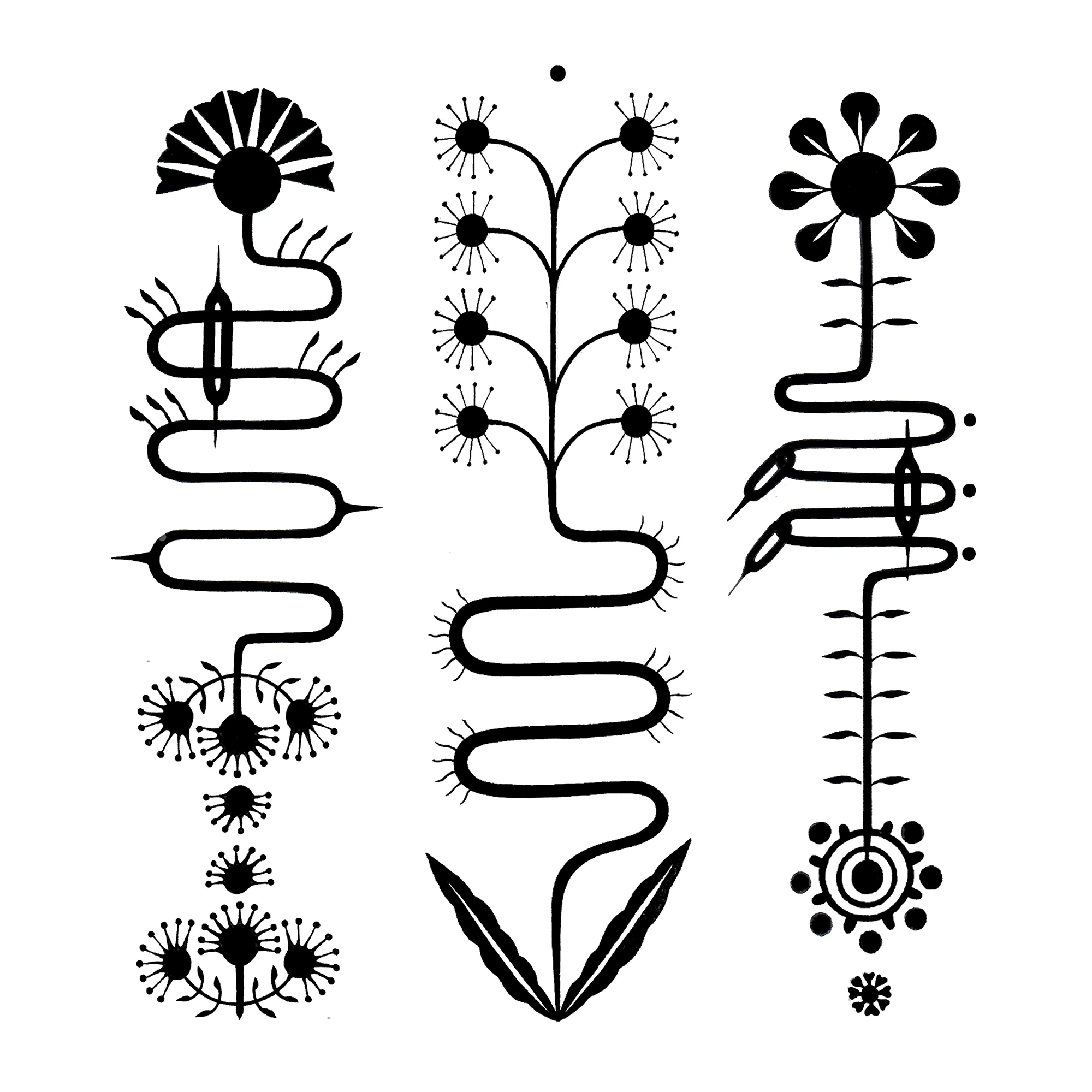This chapter describes Medusa by Ed Pien, created in 2012. It is two minutes long.
Tilt your head up, and imagine you’re standing underneath the canopy of a huge, knobbly tree, maybe a willow. The artist has created the tangled upper branches by cutting out the negative space from two different materials crinkled, flattened and layered on top of each other: translucent Japanese paper called Shoji paper and reflective film (similar to the material used on nighttime running outfits or highway signs). Though it appears to be almost black, as you move closer, the spotlights above hit it and reveal a beautiful purple-grey shimmer.
The paper cutting has been intricately done, with some branches almost as thin as a spider’s web, or strands of hair, tangled together. Larger silhouetted forms appear caught in the branches. This, along with the title Medusa, evokes the long tresses of that fearsome and perhaps misunderstood mythological character. The artist has also cut small and medium circles from yellow, green, blue, orange, red and purple from the same material and affixed them to the tree’s silhouette, so that they appear to be floating across the branches. These adornments, as Pien has said, “celebrate resilience and offer glimmer of hope in troubled times.” Trying to increase that glimmer, you could pull out your cell phone flashlight, and the light bounces back even more strongly - the reveal stops you in your tracks, just like Medusa’s provocative gaze.
To hear more about this work, play the next track. Or move to the next stop, a straight line to the right for 7 metres.

This chapter introduces the exhibition and is 3 minutes long. It was written by CUAG curators Heather Anderson, Sandra Dyck and Danielle Printup. CUAG...

This chapter describes Ex Voto / Lung by Shelagh Keeley, created in 1990, and measuring 145 by 95 cm. It is one and a...

This chapter is the text written by curator Alice Ming Wai Jim. It is two minutes long. Alice writes: Marigolds thrive in the arid...